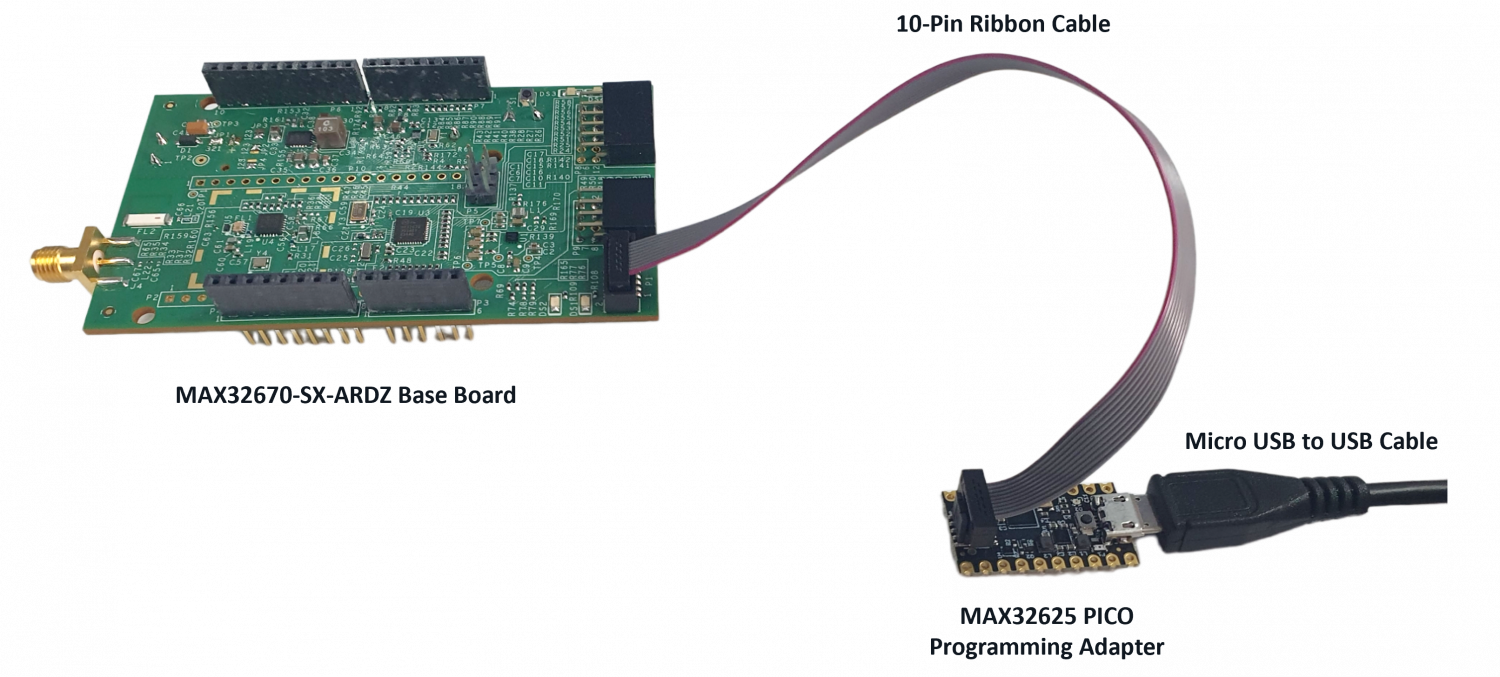 This version (02 Apr 2024 10:34) was approved by Joyce Velasco.The Previously approved version (01 Apr 2024 10:47) is available.
This version (02 Apr 2024 10:34) was approved by Joyce Velasco.The Previously approved version (01 Apr 2024 10:47) is available.
This is an old revision of the document!
The EV-FLOWMETER-ARDZ sensor is an advanced and efficient solution for flow measurement, suitable for utility and industrial applications. The ultrasonic time-of-flight technology, coupled with the integrated functions of the MAX35101 time-to-digital converter, addresses the limitations of mechanical flow meters and offers improved accuracy and longevity.

The following standard connectors are provided on the board for customer to use:
When using this Arduino board, a general-purpose ultrasonic flow rate sensor can be used. An example of a probe is the Flow Transducer with Pipe (Model:HS0003) from Audiowell Sensor Technology, as shown below:
| Item | Specifications |
| Resonant Frequency | 975 ±30 kHz |
| Resonant Impedance | ≤ 110 Ω |
| Static capacitance | 1350 ±20% pF |
| Pressure Resistance | 1.6 Mpa |
| Permanent Flowrate | 2.5 m³/h |
| Max Flowrate | 5.0 m³/h |
| Min Flowrate | 0.050 m³/h |
| Environmental Temperature | +5°C ~ +55°C |
| Diameter | DN20 |
For temperature measurement, this board supports up to four 2-wire PT1000/500 platinum resistive temperature detectors (RTD) and the connections can be seen on the diagram as shown below:
The Arduino interface is a standardized digital interface for various digital communication protocols such as SPI, I2C, and UART. These interface types were standardized by Arduino, which is a hardware and software company. Complete details on the PMOD specification can be found here.
The EV-FLOWMETER-ARDZ can be used with the MAX32670-SX-ARDZ Base Board, which is a long-range wireless radio development platform based on MAX32670 ultralow power Arm Cortex-M4 microcontroller and SX1261 RF transceiver.
Using these platforms together enables users to design solutions based on low-power, long range proprietary radio communication technique that is suitable for customized heat/flow meters.
To learn more about the Long Range Wireless Radio solution developed by Analog Devices, visit the AD-MAX32SXWISE-SL Long Range Wireless Radio Development Kit User Guide
Note that this setup only applies for MAX32670-SX-ARDZ Base Board. Users may use a different base board or microcontroller, however the firmware built for this demo application cannot be used as this is specifically designed for the MAX32670-SX-ARDZ.
Make sure to check for the battery polarity in the BT1 connector, refer to the figure below. The DS3 LED will light up indicating that you have inserted the battery correctly and that power is provided in the base board.
Make sure that the MAX32625PICO programming adapter has been flashed with the correct image before connecting it to the MAX32670-SX-ARDZ Base Board. If you do not know how to load the image, click on the instructions below:

Once you have completed this setup, proceed to PHASE 2 found in ADI Long Range Wireless Radio Software User Guide.
EV-FLOWMETER-ARDZ Design Support Package
REV. A
For questions and more information about this product, connect with us through the Analog Devices Engineer Zone.